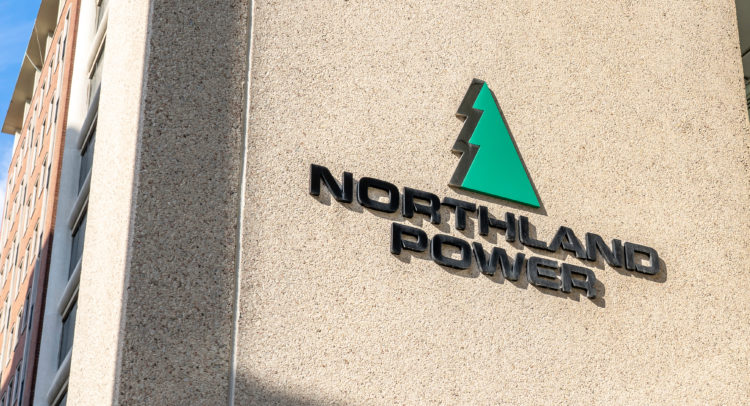As recession fears continue to grip the market, worried investors tend to look to defensive stocks such as Northland Power (TSE: NPI) (NPIFF), which is a utility company. NPI stock provides a steady dividend, even during difficult times. However, the stock doesn’t have a measurable competitive advantage and appears to be only slightly undervalued, indicating that the market has already priced in most of the company’s benefits.
Claim 70% Off TipRanks This Holiday Season
- Unlock hedge fund-level data and powerful investing tools for smarter, sharper decisions
- Stay ahead of the market with the latest news and analysis and maximize your portfolio's potential
How Much is Northland Power Stock Worth?
We estimate that the fair value of Northland Power is approximately C$44.12 under current market conditions. With its share price near C$42, the stock appears slightly undervalued.
To value the company, we used a single-stage DCF model because its free cash flows don’t grow smoothly and are difficult to predict. For the terminal growth rate, we used the 30-year Government of Canada Bond yield as a proxy for expected long-term GDP growth.
Here is our calculation:
Fair Value = Five-Year Average FCF Per Share / (Discount Rate – Terminal Growth)
C$44.12 = C$3.45 / (0.106 – 0.0278)
Northland Power May Not Have a Competitive Advantage
Although Northland Power is slightly undervalued and defensive, it doesn’t have a measurable competitive advantage. We can quantify a competitive advantage by using Northland Power’s income statement. This method involves calculating its earnings power value (EPV).
Earnings power value is measured as adjusted EBIT after tax, divided by the weighted average cost of capital, and reproduction value (the cost to reproduce the business) can be measured using total asset value. If the earnings power value is higher than the reproduction value, then a company is considered to have a competitive advantage.
For NPI, the calculation is as follows:
EPV = EPV adjusted earnings / WACC
C$9,168 million = C$761 million / 0.083
Since Northland Power has a total asset value of C$13,316 million, we can say that it does not have a competitive advantage. In other words, assuming no growth for Northland Power, it would require C$13,316 million of assets to generate C$9,168 million in value over time, which is not ideal.
NPI’s Dividend Yield is Decent but is Trending Lower
For income-oriented investors, Northland Power pays a ~2.9% dividend yield on an annualized basis. When taking a look at NPI’s historical dividend yield, you can see that it has trended downwards:

At 2.9%, the current yield is on the low end of the range, indicating that income-oriented investors are paying a premium relative to yields they have been able to receive in the past.
Analysts’ Recommendations on Northland Power
Northland Power has a Strong Buy consensus rating based on three Buys and one Hold assigned in the past three months. The average NPI price forecast of $45.26 implies 7.8% upside potential.

Should Investors Consider Including Northland Power in Their Portfolios?
For investors who want to receive income while also positioning their portfolios more defensively, Northland Power is a decent company to consider. It is slightly undervalued according to our valuation, and it even has the backing of Wall Street analysts who think it’s a Strong Buy.
Nevertheless, investors should keep in mind that not much upside is expected from the stock, as the price is pretty close to fair value. Because of this, we believe that there may be better opportunities elsewhere.
















